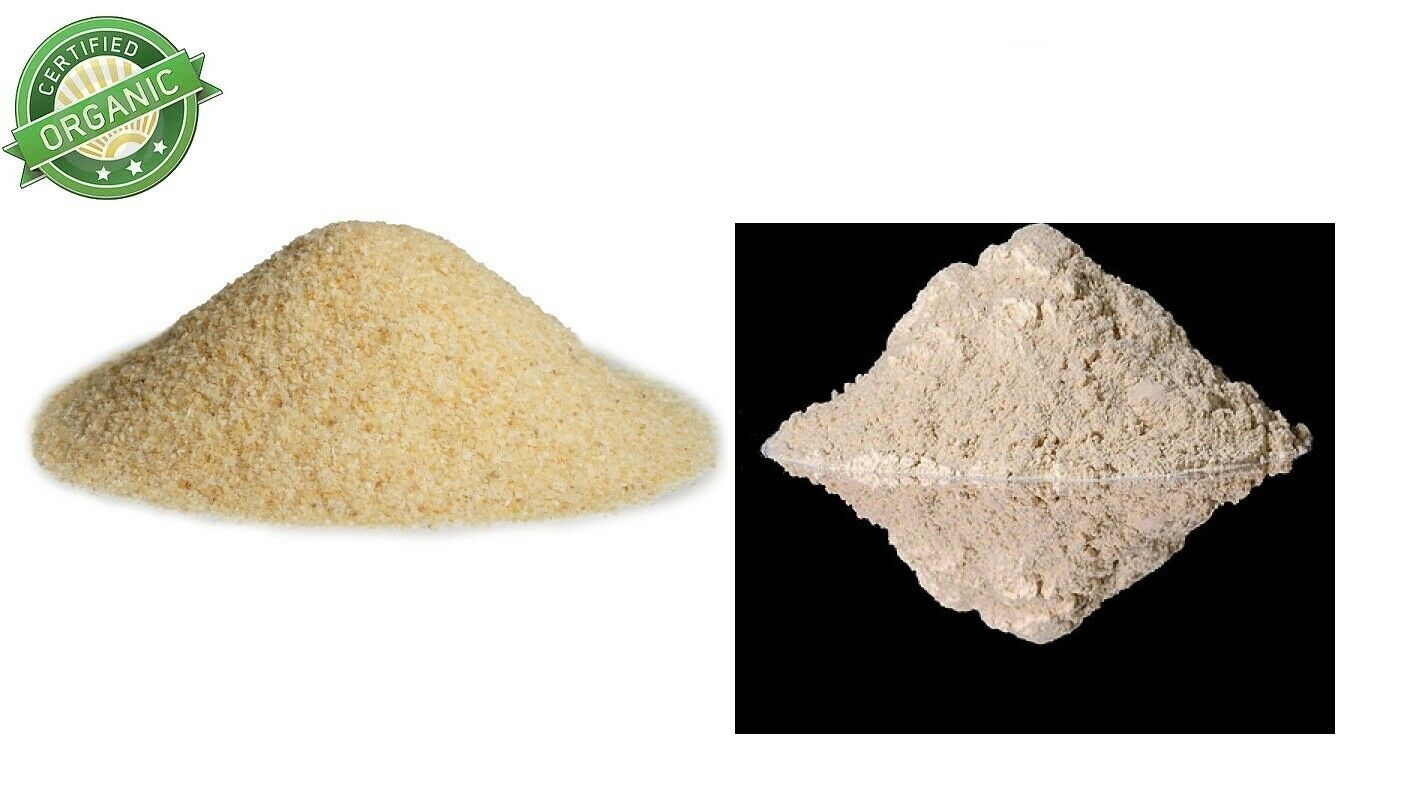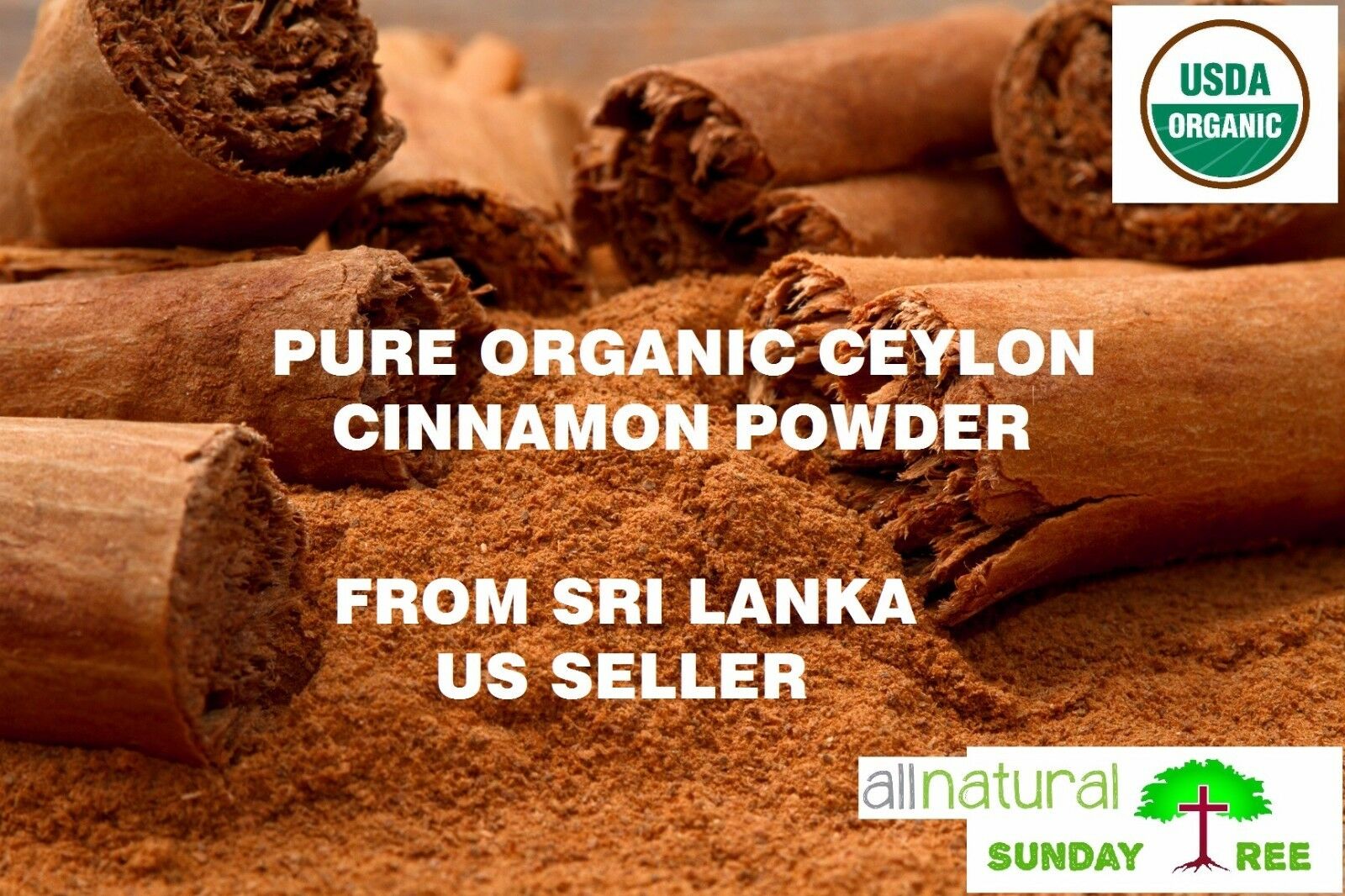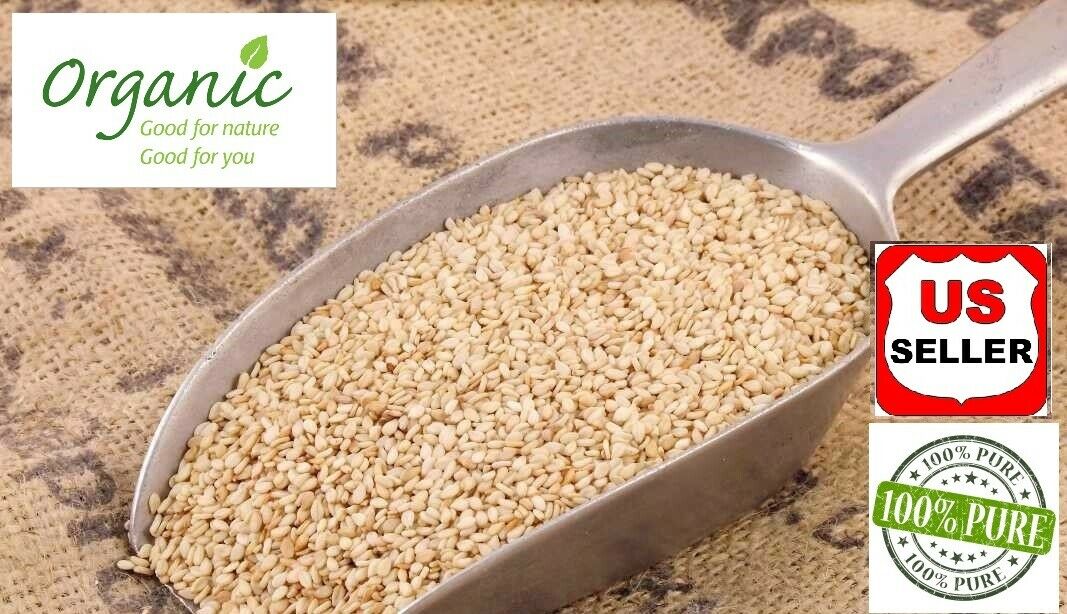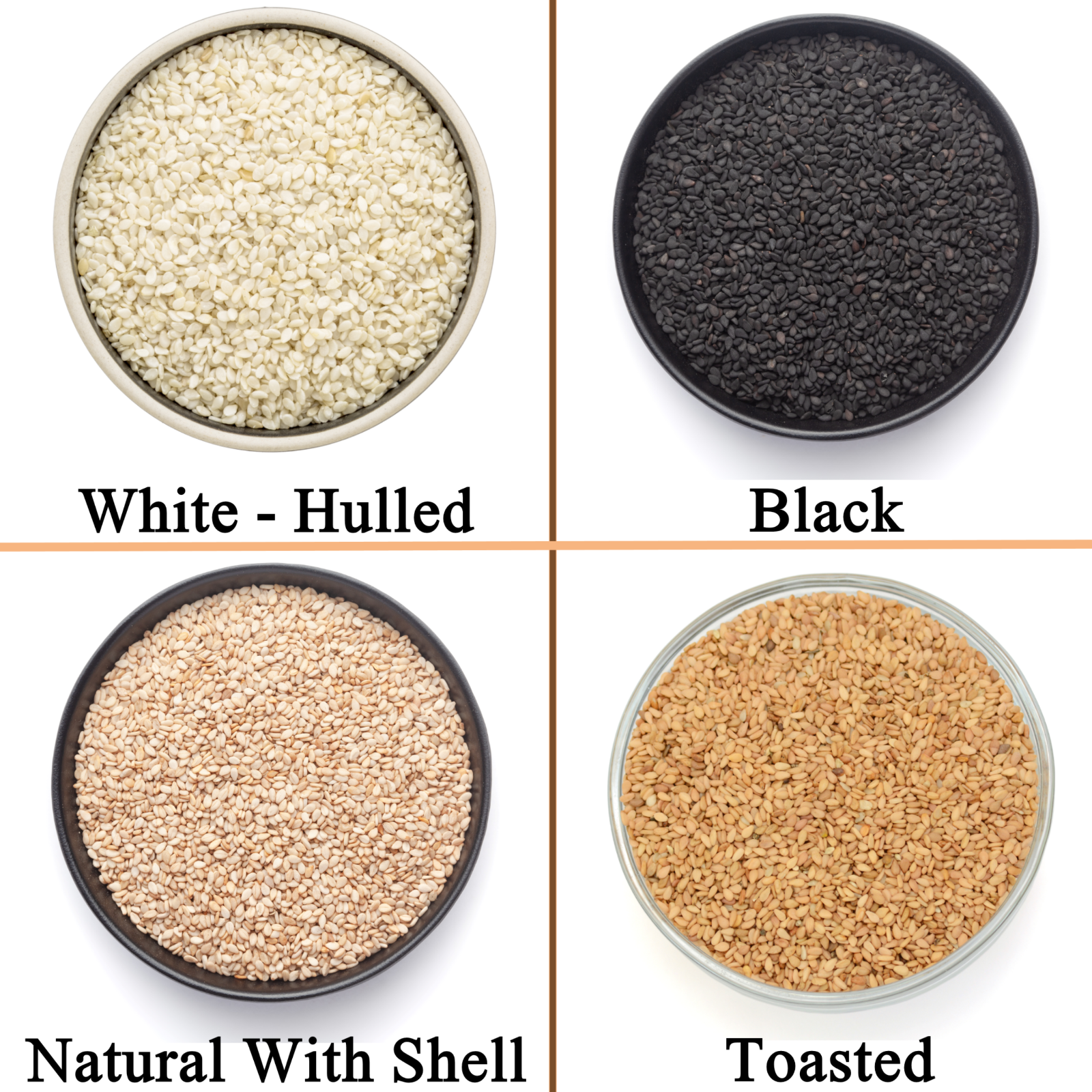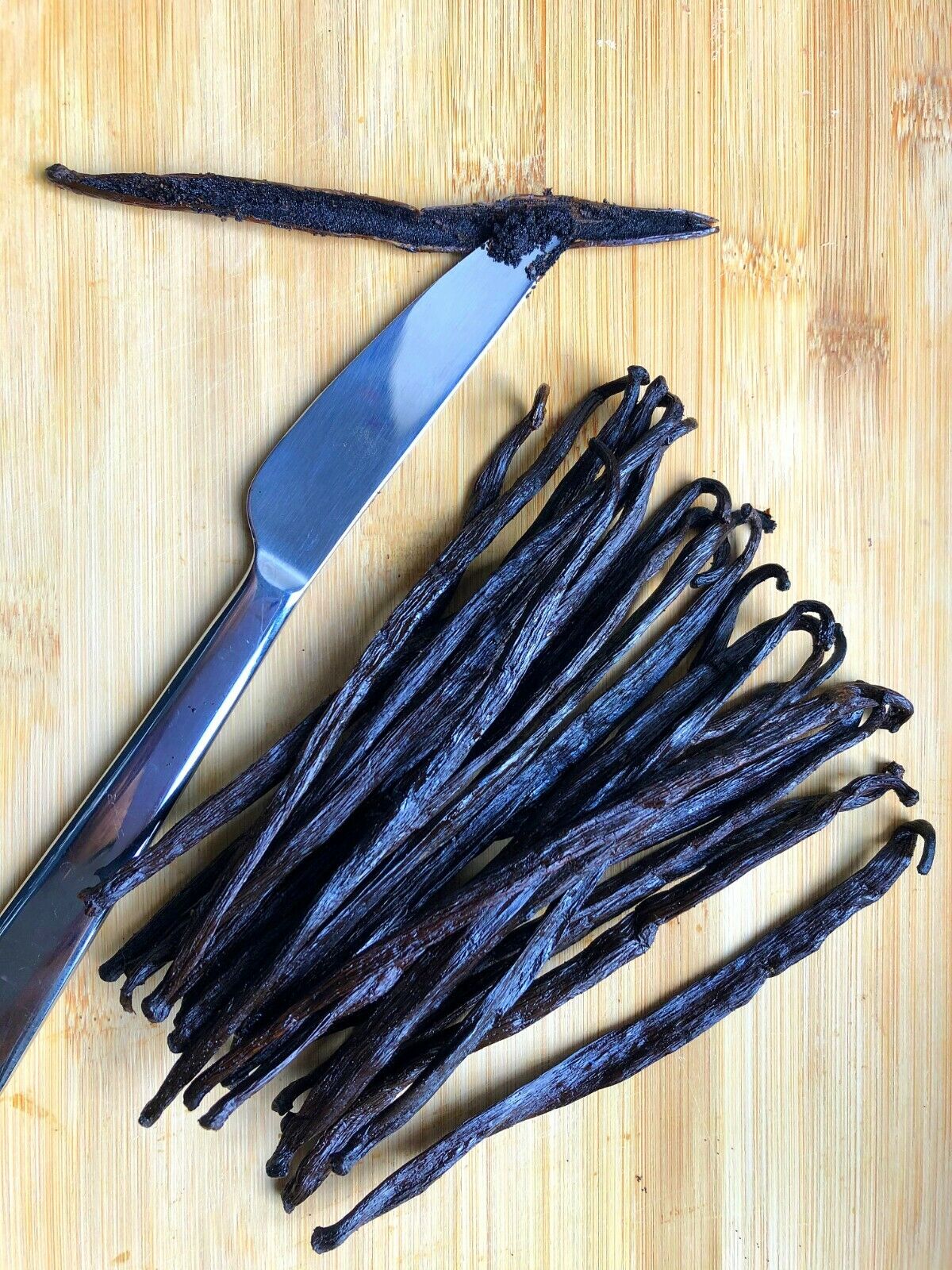-40%
ORGANIC Premium Garlic Powder,Garlic Granulated,Garlic Flakes,Chop,Mince4oz-5lbs
$ 6.33
- Description
- Size Guide
Description
WE GUARANTEE THAT WE HAVE THE BEST PRICE AND QUALITY ON EBAY !100% ORGANIC Premium Garlic Powder,Garlic Granulated,
Garlic Flakes,Chopped or Minced
4oz-5lbs
F
REE SHIPPING, FAST DELIVERY.
30 DAYS MONEY BACK, NO RESTOCKING FEE!
Health Benefits
Whole books have been written about garlic, an herb affectionately called "the stinking rose" in light of its numerous therapeutic benefits. A member of the lily or
Allium
family, which also includes onions and leeks, garlic is rich in a variety of powerful sulfur-containing compounds including
thiosulfinates
(of which the best known compound is
allicin
),
sulfoxides
(among which the best known compound is
alliin
), and
dithiins
(in which the most researched compound is ajoene). While these compounds are responsible for garlic's characteristically pungent odor, they are also the source of many of its health-promoting effects.
More recent research has identified additional sulfur-containing compounds that are responsible for garlic's star status as a health-supporting food. These sulfur compounds include 1,2-vinyldithiin (1,2-DT), and thiacremonone. The hydrogen sulfide gas (H2S) that can be made from garlic's sulfides has also been the subject of great research interest. When produced and released from our red blood cells, this H2S gas can help dilate our blood vessels and help keep our blood pressure under control.
Finally, when thinking about the sulfur compounds in garlic, it is important to remember that sulfur itself is a key part of our health. Several research studies have noted that the average U.S. diet may be deficient in sulfur, and that foods rich in sulfur may be especially important for our health. In addition to all of the sulfur-related compounds listed above, garlic is an excellent source of manganese and vitamin B6, a very good source of vitamin C, and a good source of selenium.
Cardiovascular Benefits
Most of the research on garlic and our cardiovascular system has been conducted on garlic powder, garlic oil, or aged garlic extracts rather than garlic in food form. But despite this research limitation, food studies on garlic show this allium vegetable to have important cardioprotective properties. Garlic is clearly able to lower our blood triglycerides and total cholesterol, even though this reduction can be moderate (5-15%).
But cholesterol and triglyceride reduction are by no means garlic's most compelling benefits when it comes to cardioprotection. Those top-level benefits clearly come in the form of blood cell and blood vessel protection from inflammatory and oxidative stress. Damage to blood vessel linings by highly reactive oxygen molecules is a key factor for increasing our risk of cardiovascular problems, including heart attack and atherosclerosis. Oxidative damage also leads to unwanted inflammation, and it is this combination of unwanted inflammation and oxidative stress that puts our blood vessels at risk of unwanted plaque formation and clogging. Garlic unique set of sulfur-containing compounds helps protect us against both possibilities—oxidative stress and unwanted inflammation.
The following provides a list of sulfur-containing garlic's constituents that help lower our risk of oxidative stress:
alliin
allicin
allixin
allyl polysulfides (APS)*
diallyl sulfide (DAS)
diallyl disulfude (DADS)
diallyl trisulfide (DATS)
N-acetylcysteine (NAC)
N-acetyl-S-allylcysteine (NASC)
S-allylcysteine (SAC)
S-allylmercaptocysteine (SAMC)
S-ethylcysteine (SEC)
S-methylcysteine (SMC)
S-propylcysteine (SPC)
1,2-vinyldithiin (1,2-DT)
thiacremonone
* "Allyl polysulfides" is a general term that refers to a variety of compounds.
On the anti-inflammatory side of the equation, garlic's 1,2-vinyldithiin (1,2-DT) and thiacremonone are the compounds that have been of special interest in recent research. Both compounds appear to work by inhibiting the activity of inflammatory messenger molecules. In the case of thiacremonone, it is the inflammatory transcription factor called NFkappaB that gets inhibited. In the case of 1,2-DT, the exact anti-inflammatory mechanisms are not yet clear, even though the release of inflammatory messaging molecules like interleukin 6 (IL-6) and interleukin 8 (IL-8) by macrophage cells has been shown to be reduced in white adipose tissue by 1,2-DT. The combination of anti-inflammatory and anti-oxidative stress compounds in garlic makes it a unique food for cardiovascular support, especially in terms of chronic degenerative cardiovascular conditions like atherosclerosis.
In addition to the ability of garlic to help prevent our blood vessels from becoming blocked, this allium vegetable may also be able to help prevent clots from forming inside of our blood vessels. This cardiovascular protection has been linked to one particular disulfide in garlic called ajoene. Ajoene has repeatedly been shown to have anti-clotting properties. It can help prevent certain cells in our blood (called platelets) from becoming too sticky, and by keeping this stickiness in check, it lowers the risk of our platelets clumping together and forming a clot.
Equally impressive about garlic is its ability to lower blood pressure. Researchers have known for about 10 years that the allicin made from alliin in garlic blocks the activity of angiotensin II. A small piece of protein (peptide), angiotensin II helps our blood vessels contract. (When they contract, our blood is forced to pass through a smaller space, and the pressure is increased.) By blocking the activity of angiotensin II, allicin form garlic is able to help prevent unwanted contraction of our blood vessels and unwanted increases in blood pressure.
More recently, however, researchers have found that garlic supports our blood pressure in a second and totally different way. Garlic is rich in sulfur-containing molecules called polysulfides. It turns out that these polysulfides, once inside our red blood cells (RBCs), can be further converted by our RBCs into a gas called hydrogen sulfide (H2S). H2S helps control our blood pressure by triggering dilation of our blood vessels. When the space inside our blood vessels expands, our blood pressure gets reduced. (H2S is described as a "gasotransmitter" and placed in the same category as nitric oxide (NO) as a messaging molecule that can help expand and relax our blood vessel walls.) Interestingly, our RBCs do not appear to use processed garlic extracts in the same way that they use polysulfides in food-form garlic.
Garlic's numerous beneficial cardiovascular effects are due to not only its sulfur compounds, but also to its vitamin C, vitamin B6, selenium and manganese. Garlic is a very good source of vitamin C, the body's primary antioxidant defender in all aqueous (water-soluble) areas, such as the bloodstream, where it protects LDL cholesterol from oxidation. Since it is the oxidized form of LDL cholesterol that initiates damage to blood vessel walls, reducing levels of oxidizing free radicals in the bloodstream can have a profound effect on preventing cardiovascular disease.
Garlic's vitamin B6 helps prevent heart disease via another mechanism: lowering levels of homocysteine. An intermediate product of an important cellular biochemical process called the methylation cycle, homocysteine can directly damage blood vessel walls.
The selenium in garlic can become an important part of our body's antioxidant system. A cofactor of
glutathione peroxidase
(one of the body's most important internally produced antioxidant enzymes), selenium also works with vitamin E in a number of vital antioxidant systems.
Garlic is rich not only in selenium, but also in another trace mineral, manganese, which also functions as a cofactor in a number of other important antioxidant defense enzymes, for example,
superoxide dismutase
. Studies have found that in adults deficient in manganese, the level of HDL (the "good form" of cholesterol) is decreased.
Anti-Inflammatory Benefits Across Body Systems
Our cardiovascular system is not the only body system that may be able to benefit from garlic's anti-inflammatory properties. There's preliminary evidence (mostly from animal studies, and mostly based on garlic extracts rather than whole food garlic) that our our musculoskeletal system and respiratory system can also benefit from anti-inflammatory compounds in garlic. Both the diallyl sulfide (DAS) and thiacremonone in garlic have been shown to have anti-arthritic properties. And in the case of allergic airway inflammation, aged garlic extract has been show to improve inflammatory conditions (once again in animal studies).
Even more preliminary is research evidence showing that some inflammatory aspects of obesity may be altered by sulfur-containing compounds in garlic. Specifically, there is one stage in development of the body's fat cells (adipocytes) that appears to be closely related to status of our inflammatory system. Fat cells cannot become fully themselves unless they are able to progress from a preliminary stage called "preadipocytes" to a final stage called "adipocytes." One of the sulfur compounds in garlic (1,2,-vinyldithiin, or 1,2-DT) appears able to lessen this conversion of preadipocytes into adipocytes, and the impact of 1,2-DT appears to be inflammation-related. Even though very preliminary, this research on 1,2-DT is exciting because obesity is increasingly being understood as a disease characterized by chronic, low level inflammation and our inflammatory status is precisely where garlic's 1,2-DT has its apparent impact.
Antibacterial and Antiviral Benefits
From a medical history standpoint, the antibacterial and antiviral properties of garlic are perhaps its most legendary feature. This allium vegetable and its constituents have been studied not only for their benefits in controlling infection by bacteria and viruses, but also infection from other microbes including yeasts/fungi and worms. (One particular disulfide in garlic, called ajoene, has been successfully used to help prevent infections with the yeast Candida albicans.) Very recent research has shown the ability of crushed fresh garlic to help prevent infection by the bacterium Pseudomonas aeruginosa in burn patients. Also of special interest has been the ability of garlic to help in the treatment of bacterial infections that are difficult to treat due to the presence of bacteria that have become resistant to prescription antibiotics. However, most of the research on garlic as an antibiotic has involved fresh garlic extracts or powdered garlic products rather than fresh garlic in whole food form.
Overgrowth of the bacterium
Helicobacter pylori
in the stomach—a key risk factor for stomach ulcer—has been another key area of interest for researchers wanting to explore garlic's antibacterial benefits. Results in this area, however, have been mixed and inconclusive. While garlic may not be able to alter the course of infection itself, there may still be health benefits from garlic in helping to regulate the body's response to that infection.
Garlic and Iron Metabolism
Recent research has shown that garlic may be able to improve our metabolism of iron. When iron is stored up in our cells, one of the key passageways for it to be moved out of the cell and returned into circulation involves a protein called ferroportin. Ferroportin is protein that runs across the cell membrane, and it provides a bridge for iron to cross over and leave the cell. Garlic may be able to increase our body's production of ferroportin, and in this way, help keep iron in circulation as it is needed.
“
WARNING
: This product can expose you to chemicals including arsenic, which is known to the State of California to cause cancer. For more information, go to
www.P65Warnings.ca.gov
.”
